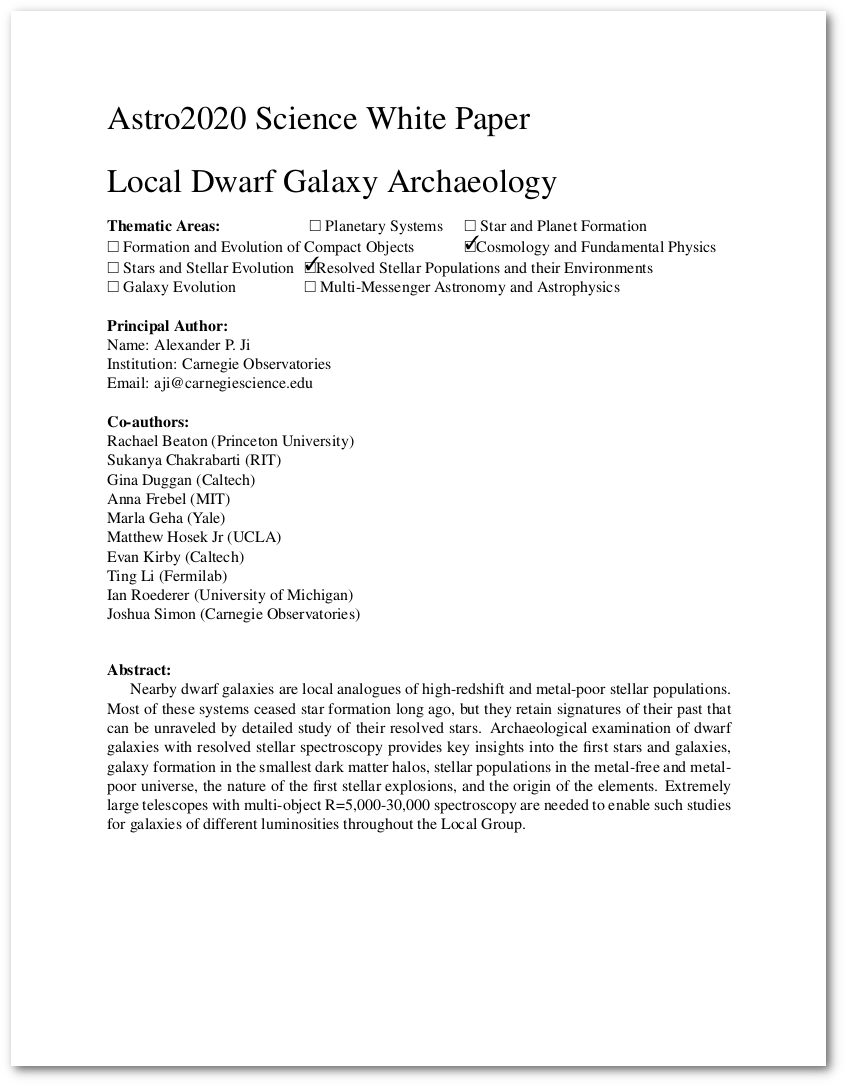|

Click here to wiew the article (pdf)
|
|
Abstract
Nearby dwarf galaxies are local analogues of high-redshift and metal-poor stellar populations. Most of these systems ceased star formation long ago, but they retain signatures of their past that can be unraveled by detailed study of their resolved stars. Archaeological examination of dwarf galaxies with resolved stellar spectroscopy provides key insights into the first stars and galaxies, galaxy formation in the smallest dark matter halos, stellar populations in the metal-free and metal-poor universe, the nature of the first stellar explosions, and the origin of the elements. Extremely large telescopes with multi-object R=5,000-30,000 spectroscopy are needed to enable such studies for galaxies of different luminosities throughout the Local Group.
Conclusion
"We recommend the construction of ELTs with multi-object spectrographs to enable archaeological study of dwarf galaxy formation histories across the Local Group."
|